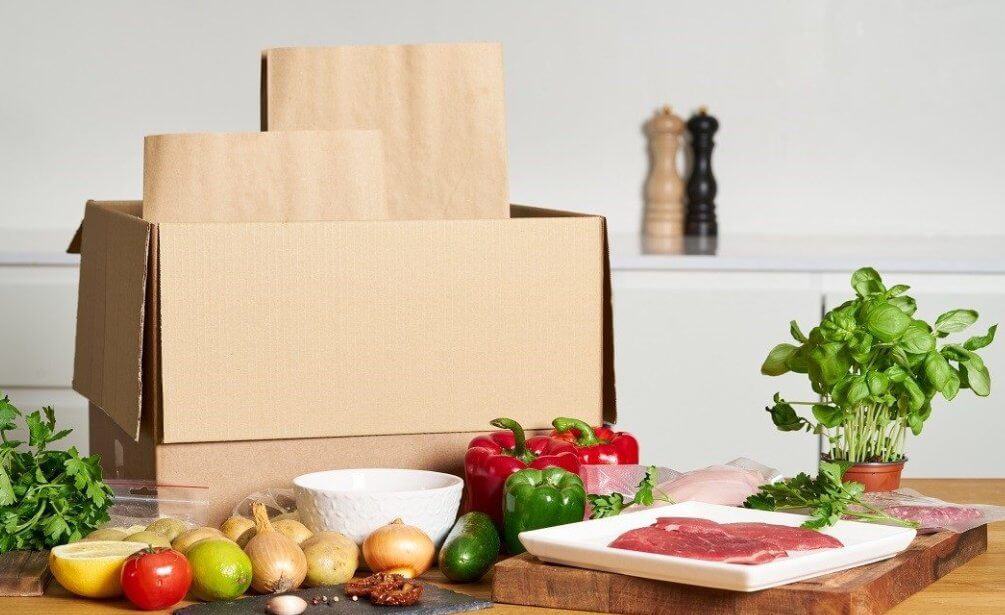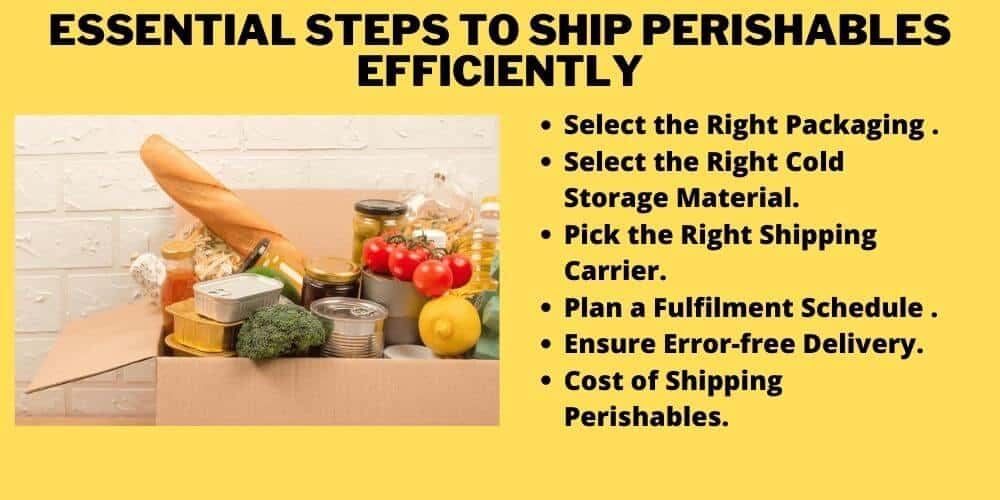Shipping perishable items is no doubt a high stake business. It’s time-sensitive and needs extra care with packaging. The effort, however, is worth it since the ecommerce industry for food and beverages is on the rise these days.

However, shipping perishables comes with its own sets of challenges. There are several tips and tricks that one needs to ensure that the items reach the customers safely, fresh, and right on time. With perishables, mistakes and delays is definitely not an option.
So, let us now explore some of these strategies regarding how to ship perishables and keep your customers forever happy.
Let’s go!
Table of Contents
How to Ship Perishables: A Tutorial
There are a few essential steps that you need to set right in order to ship perishable items efficiently. Here are some of them:

Select the Right Packaging
The selection for the right packaging depends on the type of perishable item that you want to ship. You need to choose the right combination of insulated packing materials that would keep the perishables fresh and safe.
Things Required
While shipping your perishables, you may need more than one packing material. So, it is crucial to conduct proper research and find out the exact requirements of the product you are shipping and the specific type of packaging that would be the best for it.
Select the Right Cold Storage Material
Depending on the product you want to ship and the packaging you choose, you need to select the type and level of cold storage material.
For instance, with thick Styrofoam packaging, you would need a few amounts of ice or some coolant. Also, for items that need to be refrigerated but not frozen, you should use ice packs and gel coolants. Dry Ice is the one you need for items to stay frozen for a long time.
However, while doing this, you must also keep in mind the parameters of time, cost, and space. You need to find an optimal compromise between each of these parameters. Plus, you need to ensure that your shipment doesn’t fall under the category of hazardous material if you decide to use dry ice.
Pick the Right Shipping Carrier
Picking the right shipping carrier is the next essential step in the process. Here too, there is no one right answer. The right choice will solely depend upon the type of product being shipped, and the time it needs to reach its customer.
Evidently, the right carrier is the one who can deliver your product the fastest. So, choose the carrier whose transit time does not exceed 30 hours.
You can use different carriers for different zones if that helps. But you must ensure that your chosen carrier has some prior experience in delivering perishable items.
Plan a Fulfilment Schedule
To complete your shipment delivery within 30 hours, as recommended for perishables, you need to plan a fulfillment schedule right to the smallest details.
To do this, you need to:
To optimize things on the retailer’s end, you must have the comprehensive details of every order shipped, like their packaging specifications, shipping rates and methods, dispatch and delivery dates, tracking details, etc. Planning a detailed fulfillment schedule will ensure smoother shipping and faster delivery.
Ensure Error-free Delivery
Last but not the least, you must ensure that delivery is error-free. The perishable products must reach the right place at the right time.
If needed, may consider leveraging the tools that can help automate the process. Verifying the address, checking the business hours for the location, keeping track of the journey, allowing customers to choose the delivery time slot are some of the initiatives you can take to enhance predictability.
Cost of Shipping Perishables
Another important thing that needs attention while shipping perishables is the cost. The cost of shipping perishables depends on a lot of factors like:
A combination of these factors determines what your shipping cost might be.
For instance, in case of shipping perishable items that need to remain frozen in transit and need to make a long yet quick journey, you would need coolant to last the entire trip and ensure fast delivery. These two factors combined will result in a higher shipping cost.
Alternatively, if you want to go with slow delivery, you will need more coolants which will increase the package weight and hence the shipping cost. In either case, it will be a trade-off.
So, you need to understand and evaluate these combinations carefully to choose the one that’s best suited for the particular item you wish to ship. Also, there are shipping rates, services, and policies to compare for various shipping companies that deliver perishable items.
All these factors combined, the shipping cost for perishable items can be anywhere within the range of $30 to $150. So, it is by standardizing all these factors will you be able to predict the shipping cost accurately.
Some Tips to Ship Perishables Efficiently
Here are some additional tips which you can use to ship perishables efficiently:
Conclusion:
Learning how to ship perishables efficiently might seem like a huge challenge. But it’s a challenge worth venturing. For, once you master the skills of optimizing the management process, you will start reaping the benefits of this fast-growing industry.
So, make sure that you read this article carefully, conduct proper research, and apply the strategies effectively to climb up the ladder of success.